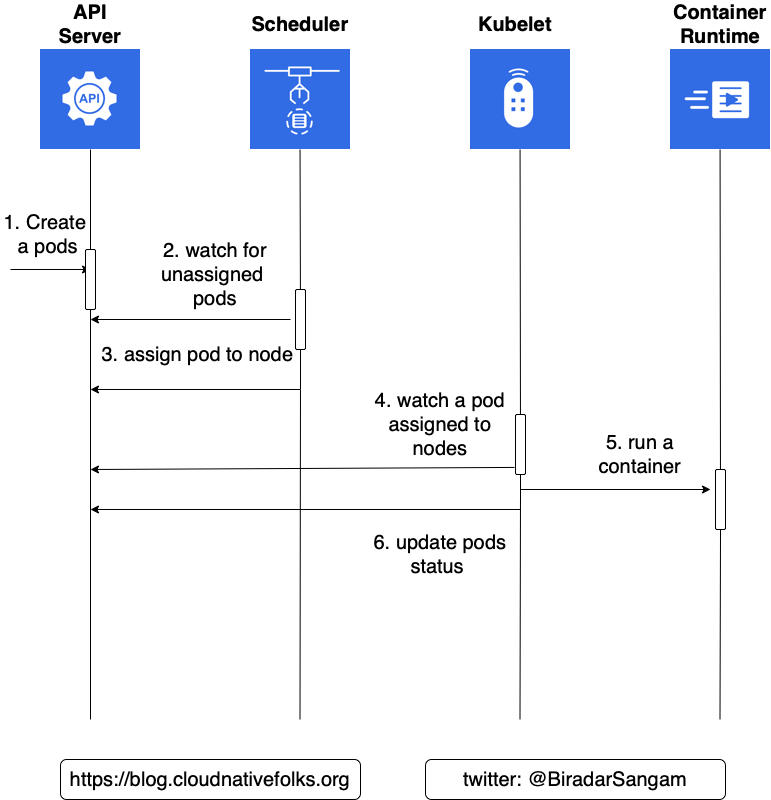Components and Stages Involved in a Pod's Scheduling
Let’s discuss some of the details of Kubernetes components, and try to get an understanding of how Pod scheduling works. Three major components were involved in the process:
1. API Server
- The API server is the central component of a Kubernetes cluster and it runs on the master node. Since we are using Minikube, both master and worker nodes are baked into the same virtual machine. However, a more serious Kubernetes cluster should have the two separated on different hosts.
- All other components interact with API server and keep watch for changes. Most of the coordination in Kubernetes consists of a component writing to the API Server resource that another component is watching. The second component will then react to changes almost immediately.
2. Scheduler
- The scheduler is also running on the master node. Its job is to watch for unassigned pods and assign them to a node which has available resources (CPU and memory) matching Pod requirements. Since we are running a single-node cluster, specifying resources would not provide much insight into their usage so we’ll leave them for later.
3. Kubelet
Kubelet runs on each node. Its primary function is to make sure that assigned pods are running on the node. It watches for any new Pod assignments for the node. If a Pod is assigned to the node Kubelet is running on, it will pull the Pod definition and use it to create containers through Docker or any other supported container runtime.
Sequential Breakdown of Events
The sequence of events that transpired with the kubectl create -f pod/create.yml
command is as follows:
- Kubernetes client ( kubectl ) sent a request to the API server requesting creation of a Pod defined in the pod/create.yml file.
- Since the scheduler is watching the API server for new events, it detected that there is an unassigned Pod.
- The scheduler decided which node to assign the Pod to and sent that information to the API server.
- Kubelet is also watching the API server. It detected that the Pod was assigned to the node it is running on.
- Kubelet sent a request to container runtime requesting the creation of the containers that form the Pod. In our case, the Pod defines a single container based on the mongo image.
- Finally, Kubelet sent a request to the API server notifying it that the Pod was created successfully. The process might not make much sense right now since we are running a single-node cluster. If we had more VMs, scheduling might have happened somewhere else, and the complexity of the process would be easier to grasp. We’ll get there in due time.
The following illustration shows a Pod’s scheduling sequence.

The above illustration shows us the sequence of events associated with a Pod’s scheduling.
